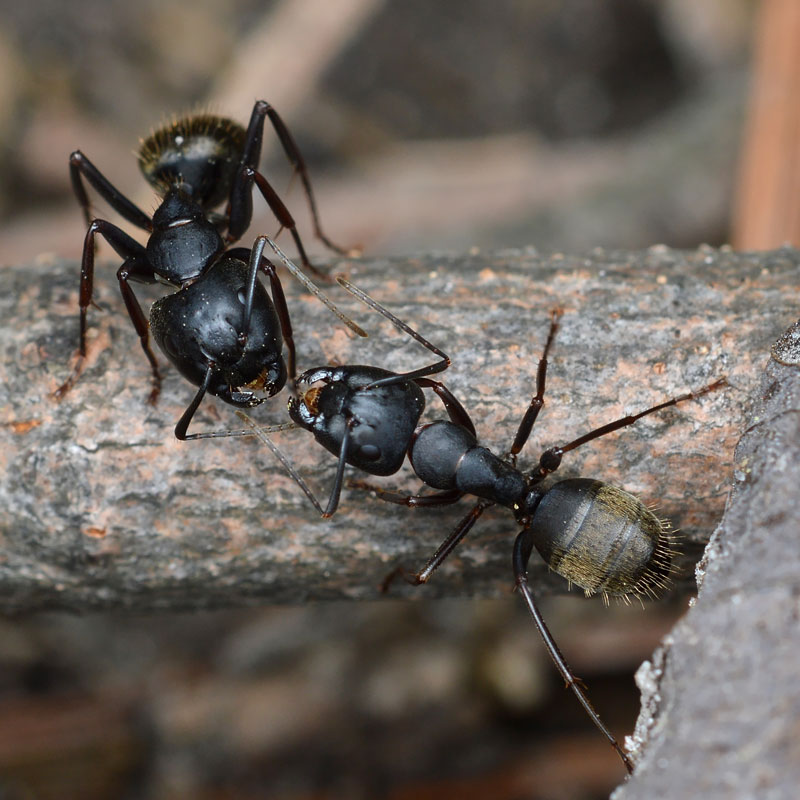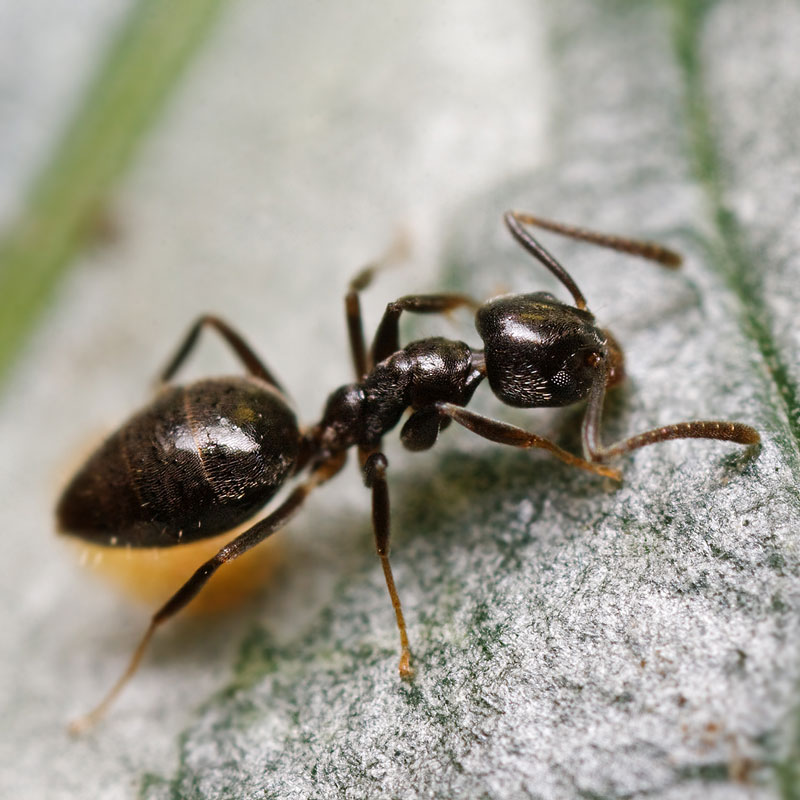Ants are one of the most annoying insects to invade your home. They can get everywhere and can be a real challenge to get rid of. What’s more, some types can cause major damage to your house or just be an extreme nuisance.
There are many different types of ants found in Maryland (55 according AntWeb), but there are only a few you need to be truly concerned about. Here’s how you can identify and get rid of them. Of course, it’s always good to get the opinion and help of a pest control professional.

Carpenter Ants
No, these guys aren’t here to build kitchen cabinets for you. They’re called carpenter ants because they like to build their nests in damp wood. They’re big for ants, normally about 1/4 to 1/2 inch long. Queens and males tend to be larger and often are winged. If you see winged ants in or near your home, there’s a good chance there’s a nest somewhere nearby—possibly even inside your house. And if that’s the case, you likely have a major problem.
As mentioned, carpenter ants will dig tunnels into damp wood. They then lay eggs in the tunnels. You’ll know you have a colony if you:
- See winged ants in your home
- Find coarse sawdust as result of their tunneling
The longer a carpenter ant colony is allowed to subsist, the more damage they’ll do to wood over time. As such, it’s important to get rid of them as quickly as possible if you uncover them.
The best way to prevent carpenter ants from invading is to remove any wood that’s become moist or damp, and to repair any leaks or pipes that are causing the moisture to accumulate. Carpenter ants often make their nests in firewood or trees, so if you have a lot of these on your property, be sure to keep them away from your home’s main structure.

Odorous House Ants
These are the most common types of ants to invade a home. They’re very small (only 1/16 to 1/8 inches long) and are typically brown or black. They get their name because crushing them creates a pretty bad smell.
Odorous house ants nest in void areas, often under mulch and leaves or in spaces between materials (deck boards, patio blocks, etc.), but they have also been found to nest in walls and under siding.
They’re attracted to sugar, so the best way to prevent them is to not leave anything sweet lying around. If you have them in your home, the easiest way to treat is to set up a perimeter with a residual spray around windows and doors—any small openings where they can get into your house. You may have to do this several times to prevent them from coming in.
Got an ant problem? We can help.
Contact us to schedule a visit from our pest control experts. We’ll treat the infestation and take all necessary measures to ensure they don’t come back!

